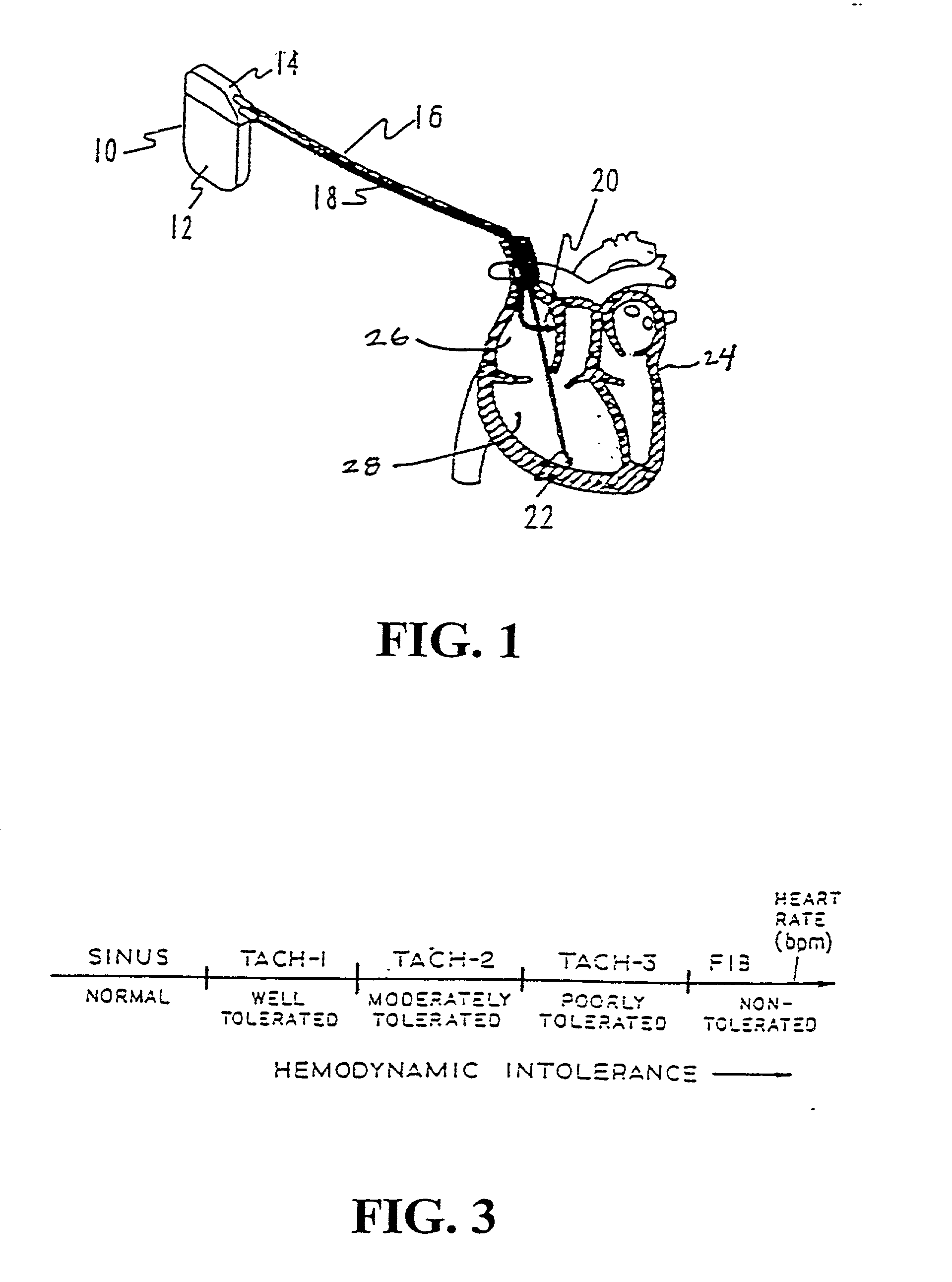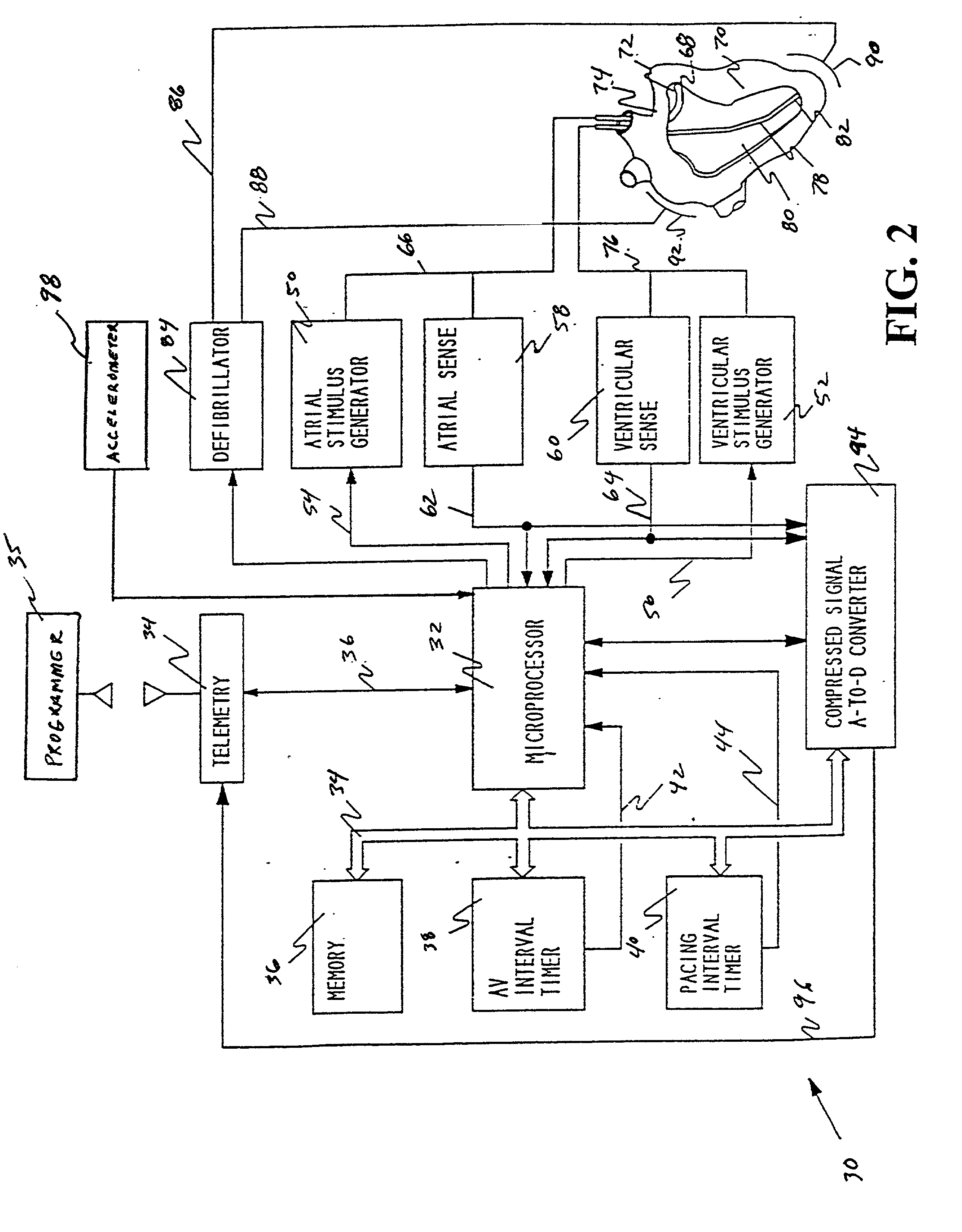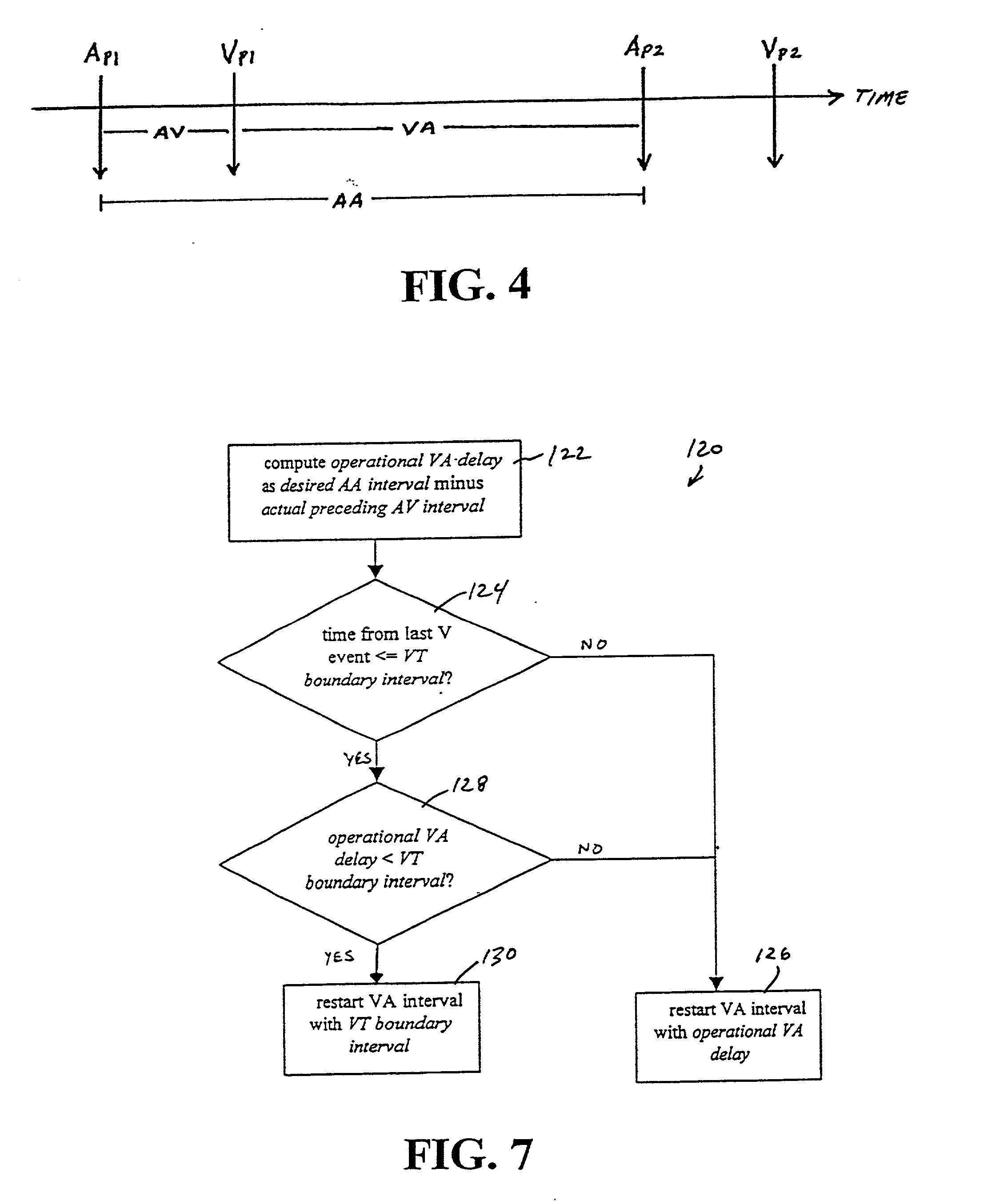Methods and apparatus for tachycardia rate hysteresis for dual-chamber cardiac stimulators
a dual-chamber, cardiac stimulator technology, applied in the field of dual-chamber cardiac stimulators, can solve problems such as the delay in detection of ventricular tachyarrhythmias, and achieve the effect of shortening the aa interval and lowering the pacing ra
- Summary
- Abstract
- Description
- Claims
- Application Information
AI Technical Summary
Benefits of technology
Problems solved by technology
Method used
Image
Examples
Embodiment Construction
[0048] Turning now to the drawings, and referring initially to FIG. 1, one embodiment of a dual-chamber cardiac stimulator is illustrated and generally designated by the reference numeral 10. As discussed below, the cardiac stimulator 10 may include an apparatus for adjusting basic time intervals versus rate to enhance the ability of the cardiac stimulator 10 to detect tachyarrhythmias. The general structure and operation of the cardiac stimulator 10 will be discussed with respect to FIGS. 1-3. Then, the functioning of a conventional dual-chamber cardiac stimulator will be discussed with regard to FIGS. 4 and 5 in order to highlight certain circumstances that may mask or delay tachyarrhythmia detection. Once these circumstances have been described, various exemplary methods for addressing these circumstances will be described with reference to FIGS. 6-13.
[0049] As shown in FIG. 1, the body of the cardiac stimulator 10 includes a case 12 and a header 14. The cardiac stimulator 10 may...
PUM
 Login to View More
Login to View More Abstract
Description
Claims
Application Information
 Login to View More
Login to View More - R&D
- Intellectual Property
- Life Sciences
- Materials
- Tech Scout
- Unparalleled Data Quality
- Higher Quality Content
- 60% Fewer Hallucinations
Browse by: Latest US Patents, China's latest patents, Technical Efficacy Thesaurus, Application Domain, Technology Topic, Popular Technical Reports.
© 2025 PatSnap. All rights reserved.Legal|Privacy policy|Modern Slavery Act Transparency Statement|Sitemap|About US| Contact US: help@patsnap.com



